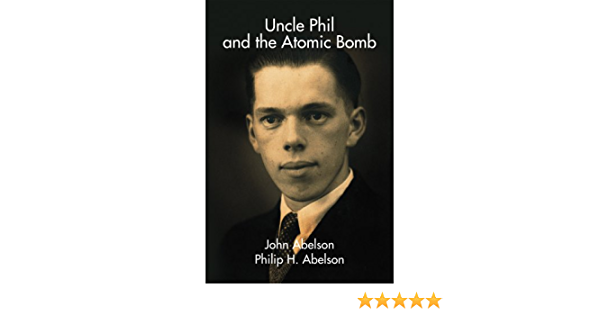He paved the way for the making of the atomic bomb: Who is Philip Hauge Abelson?
American physical chemist. He developed the method of separating isotopes of uranium and, together with McMillan, discovered neptunium, the first of the transuranium elements.

He was born on April 27 in Tacoma (Washington). After completing his studies and doctorate (1939) at the University of California, Berkeley, he was appointed as a research assistant in the Earth Magnetics department of the Carnegie Institution in Washington in the same year.
Philip Hauge Abelson (April 27, 1913 – August 1, 2004) was an American physicist, scientific editor and science writer. Trained as a nuclear physicist, he co-discovered the element neptunium, worked on isotope separation in the Manhattan Project, and wrote the first study of nuclear marine propulsion for submarines. He later worked on a broad range of scientific topics and related public policy, including organic geochemistry, paleobiology and energy policy.
He worked at the Naval Research Laboratory in Philadelphia from 1941-1946. He then returned to the Carnegie Institution as a faculty member. He was the director of the geophysics laboratory of the same organization between 1953-1971, and the chairman of the institution between 1971-1978. He undertook the management of Science, which is published by the American Association for the Advance of Science and is one of the most important scientific journals in the world (1962).
The basic structure of atoms was only understood in the 1930s, and the first attempt to obtain transuranium elements was initiated by Fermi and Segre in Italy in 1934.
Although transuranium elements were formed during these experiments in which the uranium nucleus was bombarded with free neutrons, the results of the experiment were only examined in terms of fission. While working as a research assistant at the Carnegie Institution, Abelson began to study the groups of radioactive elements released by the disintegration of the uranium nucleus.
After describing the fission products of uranium in late 1939, he continued his work with Edwin McMillan. Two physicists created a fission event by bombarding uranium oxide with neutrons in the cyclotron at Berkeley. The reaction resulted in a new radioactive element with an atomic weight of 239 and an atomic number of 93, which spontaneously released beta particles. Abelson and McMillan explained that uranium with an atomic weight of 239 and an atomic number of 92 lost a negatively charged beta particle, whose weight is negligibly small, as a result of fission, gaining a positive value without changing its atomic weight, and transforming into this element.
Named neptunium in 1940, uranium-93 was the first transuranium element to be obtained and identified in the laboratory. Abelson and McMillan also emphasized that this new element can transform into another radioactive element with atomic number 94. Indeed, uranium-94, known as plutonium, was discovered a year or so later. Today, more than 10 transuranium elements are obtained in laboratories and used in atomic batteries.
Continuing his work on the same subject at the Naval Research Laboratory during World War II, Abelson developed a method to separate uranium isotopes in 1943. This method, known as "gas diffusion", is one of the most widely used isotope separation methods today. Starting from the principle that gases have different diffusion rates between porous walls, Abelson succeeded in separating the two main isotopes in the composition of natural uranium, U-235 and U-238, by passing gaseous uranium hexafluoride through a porous wall.
This method was also the basis for the construction of the atomic bomb in the USA. Abelson was also a pioneer in the construction of the first nuclear submarine. The idea of making a nuclear-powered submarine first came to the fore in 1939 in the USA, but was delayed for a while due to the emphasis on the atomic bomb project during the war years.
After the war, Ross Gunn and Abelson, directors of the US Naval Research Laboratory, prepared a report on nuclear power plants, stating that a nuclear-powered submarine could be built that could carry nuclear-tipped missiles. The first nuclear submarine, "The Nautilus", which was realized as a result of the work started in 1946 under the direction of Gunn and Abelson, was launched on January 21, 1954.
Abelson, who shifted his work largely to the field of biophysics after 1946, pioneered the use of radioactive isotopes in medicine. With this method, many diseases can be diagnosed and treated today. Abelson, who was interested in the biosynthesis of microorganisms, especially amino acids, while working at the Carnegie Institution's Geophysics Laboratory, came across amino acids, the building blocks of protein, in fossils in 1955. A year later, he detected the presence of fatty acids in rocks that are about a billion years old. Understanding that the existence of these basic substances that make up living things goes back so long is important in terms of shedding light on the chemical properties of evolution.
